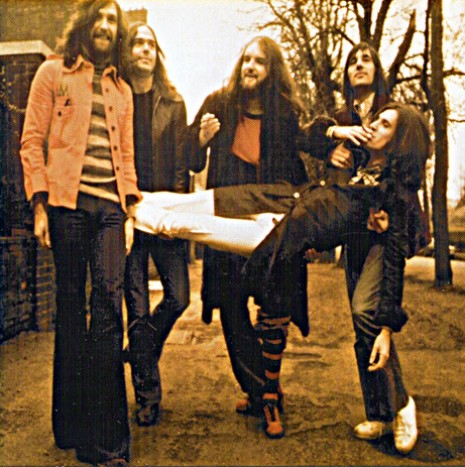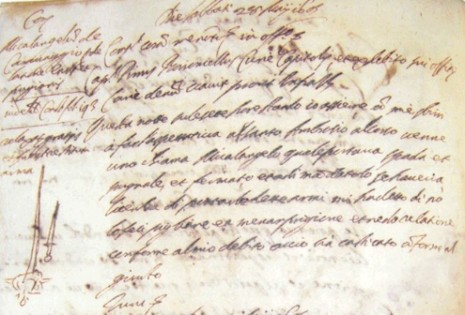
Jean Cocteau was disingenuous when he wrote, “It is often said that The Blood of a Poet (Le sang d’un poète) is a surrealist film. However, Surrealism did not exist when I first thought of it.”
Cocteau was wrong. Surrealism not only existed, it was a major artistic and cultural force.
The idea for The Blood of a Poet first came to Cocteau at a party in 1929:
The idea of a film had its germination during a house party given by Charles and Marie-Laure de Noailles at Hyeres in 1929. Georges Auric, Cocteau’s lifelong musical collaborator, surprised his hosts by announcing that he wanted to compose the score for an animated cartoon. Cocteau was asked on the spot to provide a scenario. After some discussion, the Noailles agreed to give Cocteau a million francs to make a real film with a score by Auric. This became The Blood of a Poet, still one of the most widely viewed of all Cocteau’s screenworks. Cocteau described its disturbing series of voyeuristic tableaux as “a descent into oneself, a way of using the mechanism of the dream without sleeping, a crooked candle, often mysteriously blown out, carried about in the night of the human body.”
By then, Max Ernst had painted the first major Surrealist painting, “The Elephant Celebes” in 1921, and André Breton had written the Surrealist Manifesto, in 1924.
Blood of a Poet can’t even be classed as the first Surrealist film, as Entr’acte had been made by René Clair, in 1924; The Seashell and the Clergyman (La Coquille et le clergyman) arguably the first true Surrealistic film, directed by Germaine Dulac, and written by Antonin Artaud, was made in 1928; and Luis Buñuel and Salvador Dalí had made two landmark Surrealist films, Un Chien Andalou (1928) and L’Âge d’Or (1930), by the time Cocteau was ready to put his thoughts on celluloid.
While there are undoubted references to Surrealist imagery (i.e. the lips on the artist’s hand), The Blood of a Poet shouldn’t be tied into any group or movement, for it is a film very much centered in Cocteau’s artistic sensibilities:
The Blood of a Poet like so much of what Cocteau created, abounds in autobiographical motifs: the macho Dargelos and the snowball fight, the opium smoker, the poet with his sexual stigmata, and the gunshots that, intentionally or not, echoed his father’s suicide long before.
Like all great artists, Cocteau sourced ideas from what was around him, what was new, to create his own distinct artistic vision. Of course, such magpie instincts left him open to the criticism of dilettantism, which was unfair, when considered against the range and diversity of his output as artist, writer, film-maker, designer, poet and man-about-town.
It was while out on the tiles at his favorite hot-spot “Le Boeuf sur le Toit” that Cocteau met the model, and later photographer, Lee Miller. Cocteau was casting for his film, and Miller breathlessly volunteered her services. It was her only film, and she would later describe the difficulties in making the film:
Feral Benga, the black jazz dancer who played the angel, sprained his ankle and became an angel with a limp. Cocteau put a star on Enrique Riviero’s back to cover an old bullet wound from the pistol of some cuckolded husband. The mattresses used to soundproof the studio walls were, unfortunately for the cast, infested with ravenous fleas and bedbugs. When the “bull” (really an ox) rented from an abattoir arrived at the studio with only one horn, Cocteau made a second one himself.
The film was financed by Charles, Vicomte de Noailles at a cost of one million francs. The Vicomte and his wife agreed to appear in the film, a scene where they talked amongst themselves and, on cue, began applauding. However, Cocteau intercut this footage with a another sequence, which ended in a suicide. Upon seeing the completed film, they refused to let Cocteau release it with their scene included. It was therefore re-shot with Barbette, the well-known female impersonator, and some extras.
Prior to its release, there was further controversy when it was rumored the film was filled with hidden symbolism:
Cocteau himself always denied the presence of hidden symbolism in the film, but word got about that it had anti-Christian undercurrents. This greatly distressed the Noailles. After the scandal caused the Viscount to be expelled from the elegant Jockey Club, and even brought threats of excommunication from the Church, they forbade Cocteau to allow public release of The Blood of a Poet for over a year.
Cocteau later wrote:
It is often said that The Blood of a Poet is a surrealist film. However, surrealism did not exist when I first thought of it. the interest that it still arouses probably comes from its isolation from the works with which it is classified. I am speaking of the works of a minority that has opposed and unobtrusively governed the majority throughout the centuries. This minority has its antagonistic aspects. At the time of Le sang d’un poète, I was the only one of this minority to avoid the deliberate manifestations of the unconscious in favor of a kind of half-sleep through which I wandered as though in a labyrinth.
I applied myself only to the relief and to the details of the images that came forth from the great darkness of the human body. I adopted them then and there as the documentary scenes of another kingdom.
That is why this film, which has only one style, that, for example, of the bearing or the gestures of a man, presents many surfaces for its exegesis. Its exegeses were innumerable. If I were questioned about any one of them, I would have trouble in answering.
My relationship with the work was like that of a cabinetmaker who puts together the pieces of a table whom the spiritualists, who make the table move, consult.
The Blood of a Poet draws nothing from either dreams or symbols. As far as the former are concerned, it initiates their mechanism, and by letting the mind relax, as in sleep, it lets memories entwine, move and express themselves freely. As for the latter, it rejects them, and substitutes acts, or allegories of these acts, that the spectator can make symbols of if he wishes.













